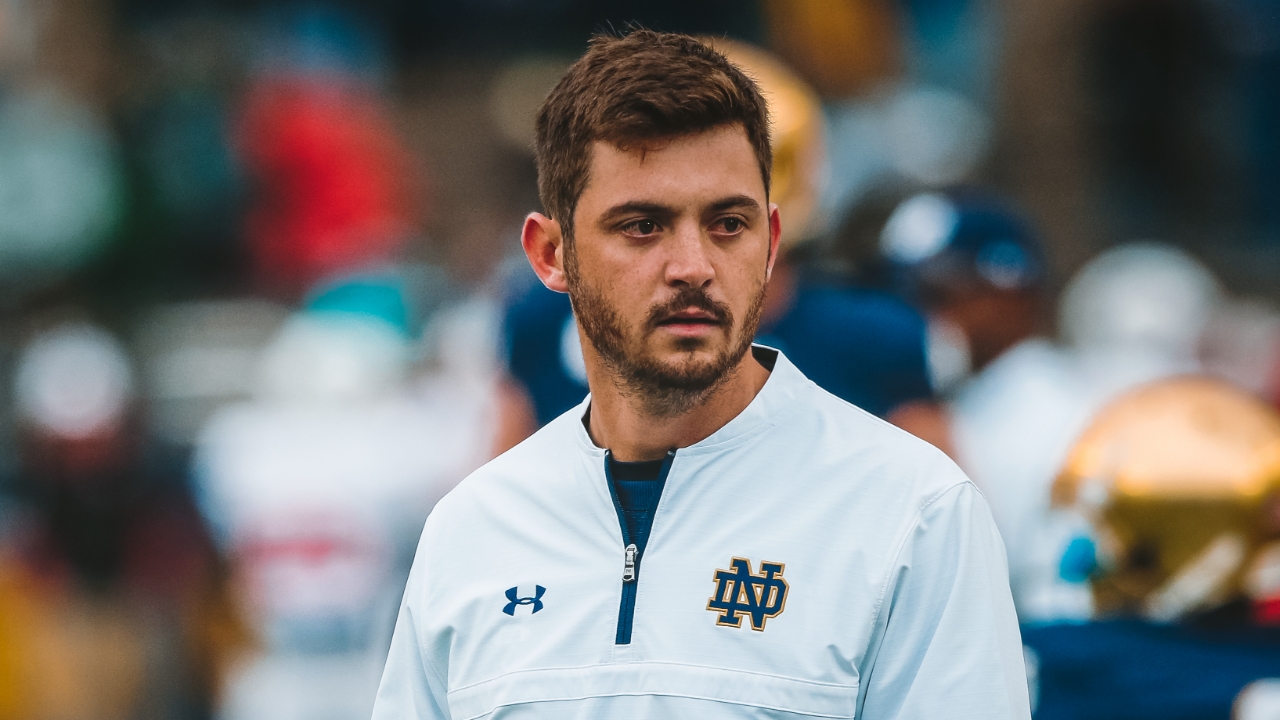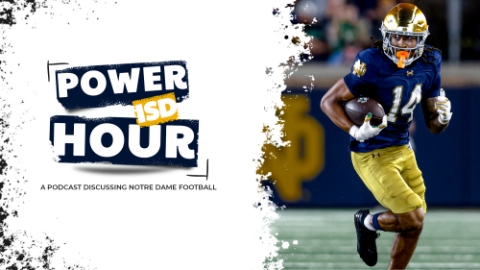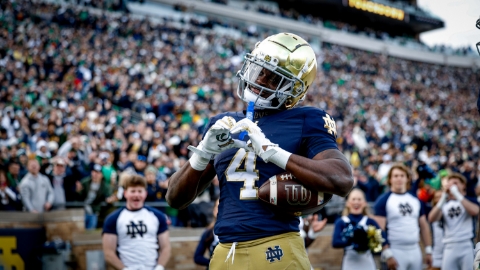
Faking the run to open up the passing game has almost been around as long as the forward pass. Play-action was a weapon for the Kansas City Chiefs in Super Bowl I and it’s evolved in exciting ways over the subsequent decades.
That evolution advanced in a major way in college football in recent years. With the emergence of RPOs (run-pass option plays) and favorable rules that give offenses an edge, faking the run to set up the pass is more in vogue than ever.
In 2014 there were only 12 quarterbacks in college football who had more than 35% of their drop backs off of play-action fakes. In 2021 that number has leaped up to 41 and 18 of them are at 45% and above.
Every offense wants more explosive plays and stressing second and third level defenders with motion and run fakes often helps offense produce them. Looking at the top-10 passing offenses in the FBS last season according to yards per attempt, seven of the ten had quarterbacks with over 42% of their attempts coming off of play-action.
Those seven played for Alabama (46.7%), Westhern Michigan (42.8%), Ole Miss (49.1%), Kent State (61.9%), Coastal Carolina (45.7%), and Oklahoma (48.2%). The other three were BYU (37.3%), Florida (29.6%), and Ohio State (33.5%).
Notre Dame finished 41st in YPA last season. Only 22.8% of Ian Book’s pass attempts were play-action passes (93rd). That number is down from 31.1 and 36.9 the previous two years.
Tommy Rees inherited a veteran quarterback, five returning starters on the offensive line, and a loaded tight end room in his first season as offensive coordinator at Notre Dame. He did a great job utilizing the strengths of the roster and it helped the offense improve to 17th in FEI from 29th the previous season. It was only the third time that the offense has finished in the top-20 during the Brian Kelly era.
Rees has a new challenge this season. He has to try and take Notre Dame’s offense to a higher level and has to do it with a new quarterback and a mostly new offensive line. It would help a lot if he had a healthy season from both Kevin Austin and Braden Lenzy at receiver as well as having some other young receivers step up, but talent alone isn’t going to propel the group to elite status.
While I expect Rees to continue to emphasize the physical identity the offense established last season, I’m certain we will see some changes from him in 2021 and one of those could be more play-action passes. That would include RPOs, something that Notre Dame seemed to drift away from last fall.
The Irish ran the ball more last year, up to 56.6% from 52.4, and there is nothing wrong with that. It doesn’t mean that it will lead to being less successful throwing. Just look at Coastal Carolina, Ohio State, and Western Michigan.
They all ran the ball at a more frequent rate than Notre Dame. The difference is that those teams were better able to use their tendency to run more as a weapon to be better in the passing game.
Rees doesn’t even have to necessarily go away from playing heavier with multiple tight ends on the field. There are plenty of ways to take advantage of play-action out of 12 (one back, two tight ends) and 13 personnel (one back, three tight ends). They showed how they could do that both early and late in the season.
Here they are in 13 personnel running play-action with Tommy Tremble leaking out. The safety is expecting to have to take on Tremble as a blocker, but he slips by and is open for a big play down the field.
They’re in 13 personnel again against Clemson in the ACC Championship game and Book is able to hit Tremble again for a long gain off of a play fake.
I wrote about Notre Dame being potentially influenced by the 49ers with their use of heavier personnel and what they do with play-action passing game. Here’s a few examples of what they do that could be incorporated into Notre Dame’s offense.
Here they are using hybrid fullback/tight end Kyle Juszczyk as a lead blocker at fullback much like Notre Dame used Tremble. They run boot off of it with tight end George Kittle looking like he is getting out to the second level and then running across wide open.
Much like the Irish, the 49ers bread and butter running play is outside zone. They do a great job of countering that with play-action like they do here. You can see the H-back, Juszczyk, look like he is trying to seal the backside of the run, but pivoting out. The quarterback hits Kittle, the outside receiver, though.
They ran a similar type of action later in the game where they did Juszyck.
Notre Dame doesn’t have to necessarily get out of 12 to be effective with RPOs either. This one from Alabama against the Irish was with two tight ends on the field and it was designed beautifully to take advantage of them as blockers widening out from tight.
Using the jet sweep in play-action is something that was also something that was underutilized last season. In Rees’ first game as a play-caller, he used the fake to get a favorable matchup with Chase Claypool on the outside. The safety was trying to respect the motion and that left Claypool one on one for a big play opportunity.
I thought we would see more of that in 2020 like this particular play with the fake jet sweep and Kyren Williams leaking out for a long gain that should have went for longer with a better throw from Book.
Book averaged 9.3 YPA on play-action drop backs, 1.8 yards more than on attempts that didn’t involve play-action. Statistically speaking it should have made sense to incorporate more of it, but for whatever reason, it didn’t happen.
Two of the best returning players on offense are running backs Kyren Williams and Chris Tyree. Notre Dame would be foolish to go away from getting them as many touches as possible and based off of how Rees called the offense in his first season as OC, I’m confident he’ll take advantage of their talent and continue to lean on the running game.
The passing game needs to be much better than it was, though. Finishing 41st again in YPA isn’t going to be good enough to take that next step. Having more explosive options at receiver is one way that can help them improve. Taking better advantage of play-action passes to compliment their running game is another.


